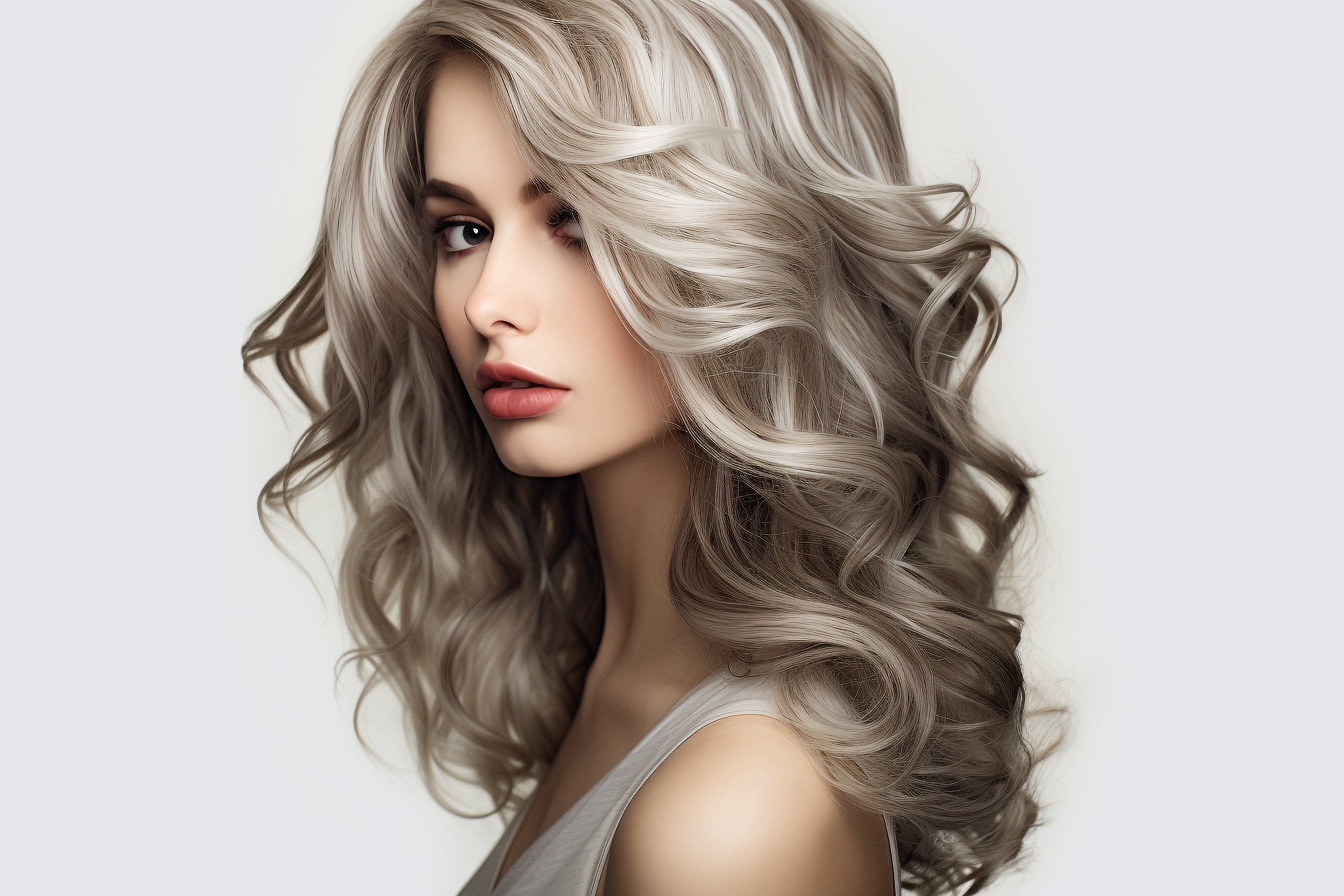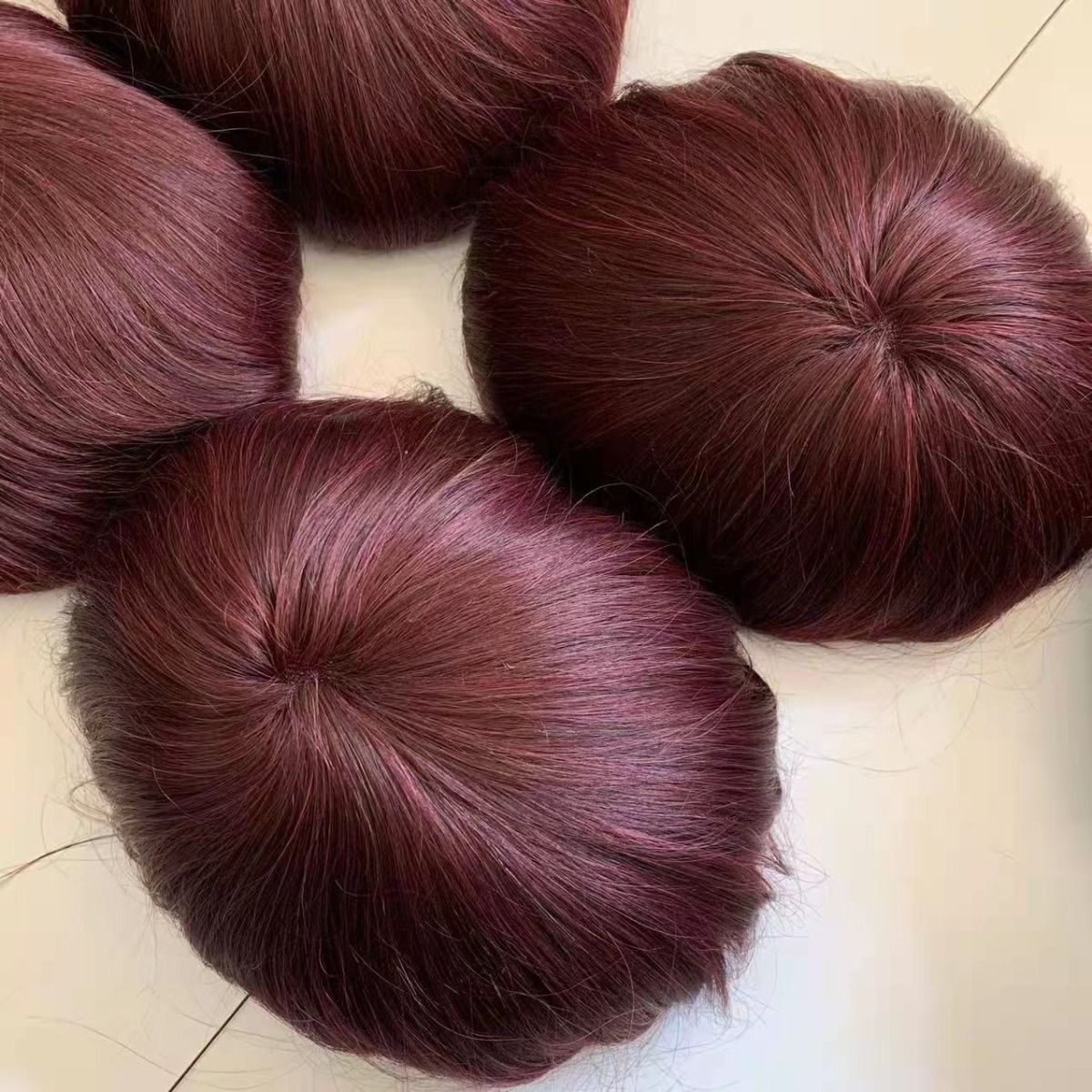THE MOST COMPLETE GUIDE OF USING SYNTHETIC HAIR SYSTEM

What is synthetic hair?
Synthetic hair is exactly what it sounds like. Wig strands are made from man-made fibers such as acrylic or nylon. These fibers undergo various chemical treatments to give them the look, feel, color and styling capabilities of human hair.
Advantages of synthetic hair
1. Easy to style
Synthetic wigs easily bounce back to their original shape after washes because they come pre-styled.Synthetic hair can be cut to suit your face shape but has less flexibility then human hair.
2.Weather Resistant
No matter whether it's a rainy day, a synthetic wig will hold its style and won't become frizzy.
3.Low Maintenance
Synthetic wigs require almost no upkeep, which is helpful for those with health or mobility issues.Synthetic hair wigs are pre-styled and so keep their shape after washing – you simply wash and leave to dry naturally and the shape will reform once dry.
4. Cost
Traditional synthetic wigs will almost always be the lowest priced option in comparison to human hair wigs.The NHS supports costs towards buying a synthetic wig.
5. Variety
Synthetic wigs come in a selection of colors and styles.
6.Curls and waves are maintained
The texture of the hair is fixed so if the wig is curly the texture will maintain unlike human hair that can be changeable.
6. Colour fast
Unlike human hair, the colour of synthetic hair doesn’t fade over time.
7. Large range of hair colour and textures available
Because synthetic hair is man-made there is a significant variety of colours and styles.
8. Ready made
A large variety are ready to wear, pre-cut and styled.
9. Recycle and reuse
Wigs in good condition can be donated to a wig bank to be re-used.
Disdvantages of synthetic hair
1. Shininess
Synthetic wigs often have an unnatural shine to them. To reduce shine, apply a dry shampoo all over.
2.Less Versatility
Most synthetic wigs can't be heat styled or worn while cooking.
3.Longevity
Synthetic wigs don't last as long as their human hair wig counterparts, typically only four to six months with daily wear.
What is high quality synthetic hair?
Hiperlon is one of the highest quality synthetic fibre you will find. It is used for wig making and made to be durable, strong and as natural looking as possible. It has a heat resistance of up to 420 degrees C and reacts well to styling and dying. Powerlon is very similar to Hiperlon, but slightly softer.
Kanekalon hair fibers are heat-friendly so they work with curling irons, blow dryers and hot rollers. This also means if you’re using the hair for box braids or knotless braids, you can burn the ends to keep them intact.
Another high quality synthetic fiber is the Toyokalon. It looks and feels the most like human hair with a silky texture and it holds curls longer than other synthetic hair types.
Can you be allergic to synthetic hair?
Much like synthetic fragrances and preservatives that are used in cosmetics and certain hair-care products, people can have a synthetic hair allergy. They may experience adverse effects like itching, irritation, and redness when the hair comes in contact with their skin.The adhesives that are used to fix the wigs, some people use wigs they glue down and some people just use wigs that are attached with the clips that are inside. The ones that are using glue, they have a chemical in them called methacrylate and they are a common allergen for a lot of people.
How to care for synthetic hair?
Pre-Wash
Gently brush the wig thoroughly with a wig comb or brush to remove any tangles.
Shampooing Your Wig
Add one tablespoon of wig shampoo to a sink or basin filled with cold water. Immerse wig for one minute and agitate gently. Do not rub. Run your fingers over the inside of the cap where it meets your forehead to remove oils and sweat. Be particularly gentle on any hand tied areas of the wig cap as this area is the most fragile. Rinse the shampoo out of the wig in cold clear water until thoroughly rinsed. Your wig can be rinsed in a basin of cold water or under cold running water. Blot the wig gently with a towel. Do not squeeze or wring.
Conditioning Your Wig
After you have washed your wig, you are ready to condition it. The wig should still be wet from washing. Apply a small amount of wig conditioner to your hands and rub together. Carefully work the conditioner through the hair, avoiding the cap. You want to keep conditioner away from the cap. On hand tied areas especially, the conditioner can cause the hand tied knots to become untied, resulting in hair loss. Thoroughly rinse the conditioner from the hair over cold running water. Instead of using regular conditioner, an alternate method is to very lightly spray your wig with conditioning spray, spraying 10-12 inches from the hair.
Drying Your Wig
Blot excess water with a towel. Do not squeeze or wring. Air dry your wig on a wig stand. Do not use a hair dryer and do not brush the wig while it is wet. Wig stands are ideal for drying because they allow air to circulate, reaching all surfaces of the wig. If you do not have a wig stand, you may place your wig on a tall slender object (such as a can of hair spray) covered with a hand towel. Do not dry your wig on a styrofoam head as this will stretch out the cap. You may gently shake your wig and lightly work the hair with your fingertips, but wait until the wig is dry to style. Do not allow your wig to dry in direct sunlight. If you wash your wig in the early evening, it should be dry by morning.
Washing Frequency
For maximum life, it is recommended that you wash your wig every 6-8 wearings. Washing your wig more frequently will stress the fibers and decrease its life span. Washing it less frequently will allow sweat and oils to build up inside of the cap, which will break down the fibers and adversely affect longevity.









































